
In recent years, sustainability has gone from a buzzword for museums to an action step, as our organizations increasingly confront and prepare for the adverse effects of climate change on their sites and, more importantly, their communities. Today, we can find plenty of examples of museums that have developed and utilized climate adaptation and sustainability plans, and we can expect the rest of the field to follow in the coming years.
In addition to these formal internal plans, museums are also responding to climate change by creating new content-based positions, such as the Curator for Climate Change at the Royal Ontario Museum and the Curator of Sustainability at the Bishop Museum. These positions mark a new, deliberate direction by these museums to think beyond infrastructure toward a mission-based approach. They could very well become the model for a new type of educator, engagement, or curator position in the field to address a variety of important social issues, such as loneliness, gun violence, and so on.
To find out how a position like this works, and how sustainability is advancing across the museum landscape, I caught up with the Curator of Sustainability at the Bishop Museum, Dr. Chris Hobbs. Here are excerpts from our conversation:
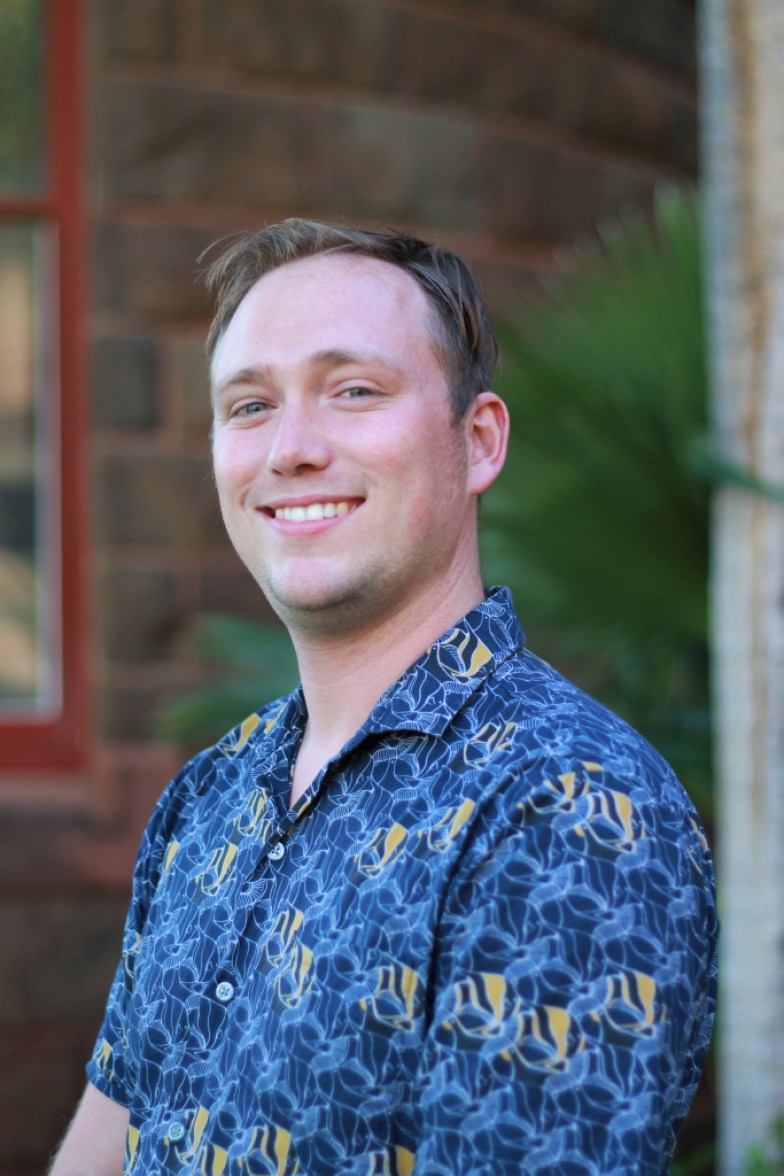
Adam Rozan: Chris, can you please share a bit about the museum and how long you’ve been in your role there?
Skip over related stories to continue reading articleCH: The Bernice Pauahi Bishop Museum in Honolulu, Hawaiʻi, is the state museum of culture and natural history and was founded in 1889. I’ve been with the museum since the start of 2019 and have been the Curator of Sustainability since 2021.
AR: What’s your background, and when you first came to the Bishop Museum, what were you doing?
CH: My background is in conservation and biodiversity research. I undertook my undergraduate and Ph.D. studies at Canterbury Christ Church University, UK, focusing on freshwater ecology, population genetics, and endangered species research. I’ve always been passionate about protecting the natural environment and using data to inform management decisions. I came to the Bishop Museum in 2019 as a postdoctoral researcher in the museum genetics lab to work on endangered and imperiled native Hawaiian land snail species. My work focused on finding novel ways to utilize museum collections and obtain genetic data from them to understand the history of a species and use that data to make management recommendations.
In 2020, at the height of the COVID-19 pandemic, I began getting involved in the Sustainability Hui (green team) at Bishop Museum, attending monthly meetings and engaging with ongoing initiative planning. In the summer of 2021, we created the Curator of Sustainability position I now fill, and I’ve been happily working on sustainability ever since.
AR: As you shared, the Curator of Sustainability role at the Bishop Museum is relatively new. What’s the origin of this role at the museum?
CH: When I first joined the Sustainability Hui, the CEO of Bishop Museum talked to the group about some of the museum’s sustainability plans. There was a focus on becoming more sustainable and reducing energy, to which I asked, “So, where are we now? What do we currently monitor?” and I was consequently tasked to research just that!
I firmly believe “you can’t manage what you don’t measure,” so getting data to inform our direction for sustainability was vital. I worked on exploring the various frameworks for sustainability that already existed both in Hawaiʻi and internationally. This would allow us to align our data-tracking with these frameworks, feed our data into them as needed, and show that we are part of a much larger picture. In Hawaiʻi, we have Hawaiʻi Green Growth’s Aloha+ Challenge, a series of metrics developed to help the state realize its 2030 sustainability goals. These are based on the UN Sustainable Development Goals, the seventeen goals set by the UN in 2015 for a more equitable and sustainable future.
With these metrics and data, we could look at where we were and are currently and start planning. At this point, a senior leadership member asked me to write a job description for the Curator of Sustainability role. I reached out to several colleagues in the museum field who held this role or knew of similar functions (there were far fewer than I expected!), and together we created the job description.
AR: You shared with me that you developed the position description with help from others in the museum field, such as Soren Brothers, the Curator of Climate Change at the Royal Ontario Museum, among others in the field. Is that right?
CH: Absolutely, and as an aside, this is one of my favorite aspects of the museum community: Everyone is so willing to support and help when reached out to!
One of my first ports of call was Carter O’Brien of the Field Museum. He gave me fantastic advice, and we bonded over our love for the band The Clash. We discussed the position, the job description, and the museum sustainability field in general; his guidance proved invaluable. Shortly after our meeting, Carter invited me to present alongside him at the Canadian Museums Association conference about some of the early work I’d been doing at Bishop Museum, showing the difference between “year zero” of formalized sustainability at an institution and “year twenty,” as the Field Museum has a long history of sustainability.
At this conference, I was lucky to meet Douglas Worts, a Culture & Sustainability Specialist at WorldViews Consulting in Toronto. We discussed high-level concepts of sustainability and the necessity to integrate Indigenous culture and ideas into thinking about sustainability. He was, in fact, the one who told me about the Royal Ontario Museum curator position and introduced me to Soren when he took up the role!
AR: In your opinion, what’s new about the role that you have? Is it that a museum is devoting a curator or an educator to address climate change and sustainability?
CH: It’s precisely that. Historically in museums (and most other fields), sustainability has been done on more of an ad hoc basis, with whichever staff member complains the most about a lack of recycling facilities given the mantle of coordinating sustainability. This is generally in addition to their regular duties and the many other hats they likely wear in the critically underfunded and understaffed museum field.
Unfortunately, this means that whenever someone must focus on the role they are paid to do, sustainability falls off the radar, and progress is lost. Then, if that staff member leaves, all that work is generally lost. After a few months, people notice that sustainability initiatives aren’t happening again, and the mantle is passed to another staff member. They often must reinvent the wheel, and the whole cycle starts again.
Having dedicated staff to coordinate sustainability at a museum, especially those conducting research or focusing on exhibit design, is a game-changer. This allows continuity and constant progress for sustainability initiatives and museums to showcase this work, catalyze change in their communities, and inspire guests to make sustainable choices. Guests and tourists are becoming increasingly interested in sustainability and the environment. As museums are one of the last bastions of informal education available to the public, we have a responsibility and a passion for facilitating this.
AR: Do you know how many US museums have positions dedicated to sustainability? And what are some other titles and roles for this work?
CH: Such positions are becoming more commonplace, but the exact number is a difficult question! Many institutions use the title Sustainability Manager and Sustainability Officer for these roles. These are often roles associated with the infrastructure and back-of-house-focused sustainability efforts.
Curatorial sustainability roles are somewhat rarer, such as the one I hold, which often focuses more on research, exhibit development and outreach activities, and infrastructure work. They are scattered here and there across museums, all with slightly different titles—“Curator of Sustainability,” “Curator of the Anthropocene,” “Curator of Human Ecology,” and “Curator of Climate Change” are just a few of the titles I know in this growing field.
I’m excited to see more over the coming years!
AR: Do you foresee sustainability positions and expertise as a growing area of museum work?
CH: Very much so! With the rocketing energy costs worldwide, the ongoing climate crisis, and a movement within the general public to learn about topics within this field, it will likely become necessary.
From a purely operational standpoint, it’s a no-brainer. Museums are often non-profit entities and are part of an often-underfunded field. Having dedicated staff to focus on researching and planning energy-saving initiatives, finding funds/grants, and assisting with implementation and monitoring progress are likely to soon be imperative at museums. Reducing costs, streamlining processes, and creating policies are vital elements needed at museums, and they require staffing.
In addition to this ‘greening’ of museums to keep them functional and solvent, having the expertise in sustainability to talk about these stories will be a growing call at museums. Communities are increasingly interested in climate change, sustainability, and social justice topics. Having staff working on these areas facilitates the community’s need for this knowledge and will hopefully catalyze and support action.
AR: What does sustainability mean to most museums today and those in the field?
CH: That’s a tricky question! I think sustainability is such a multi-faceted topic that can change depending on your environment, community, and the culture in which your organization is rooted that there is no one answer for all museums. However, I believe those in the field are all united in one core aspect of sustainability: making positive change. With the effects of climate change becoming increasingly apparent to everyone, it’s clear many of our systems are environmentally harmful, do not work as well as they could, and need to change.
In many conversations with sustainability professionals, both in the museum field and outside, there is a deep-seated passion for improving and redesigning how we approach things. For me, this is the purest form of punk: seeing a system that doesn’t work, wanting to dismantle it, and replacing it with something better—anarchy, but with a plan.
AR: Can you share a few examples of how you approach sustainability at the Bishop Museum?
CH: I like to approach sustainability with care and kindness, meeting people on their ground. Sustainability is not done because it’s easy; it’s done because it’s the right thing to do. Therefore, making significant changes to operations and people’s day-to-day activities can often be a daunting and considerable challenge. Asking staff who are already overwhelmed and understaffed to do more work and incorporate inconvenient changes can be met with pushback. Working with the team to understand their needs and hurdles and co-developing solutions gets much more buy-in than just telling them, “You need to do this; you need to be more sustainable,” without the appropriate support and guidance.
A considerable aspect of sustainability is being part of a much more extensive network, aligning with other organizations in the field, and elevating their work. At Bishop Museum, we hope to develop our campus into a ‘hub’ for sustainability, showcasing technology, concepts, and action, rooted in Hawaiian culture. We’ve already begun to create exhibits in our Science Adventure Center that explore sustainability topics, such as a recent one on Lalo (French Frigate Shoals) in the Papahānaumokuākea Marine Natural Monument. This exhibit was created in partnership with NOAA and features an area on plastic pollution. This area includes a plastic sorting interactive and information about changing systems for plastic waste, which we co-developed with Parley for the Oceans, one of our close partners. As a museum, we don’t need to be an expert in all sustainability topics, but we can bring in those who are, share their stories, raise awareness, and help catalyze change in our communities.
AR: Something that struck me from our previous conversation was that you weren’t just rushing off and trying to do new things with new initiatives. I got the sense that you were reviewing what has been done already, where the museum might need more focus, how staff can better participate in the process and be supported, and, importantly, bring in the voices of the community.
CH: This has been a struggle and something I have had to work on. I am fast-paced and like to move forwards with things quickly, which doesn’t always match the pace of long-standing institutions such as museums. Taking a more thoughtful and tempered approach to work at a museum is often much more effective. Taking time to think about perspectives and the needs of your staff community and those of the communities outside of your museum is incredibly important.
It’s straightforward to get caught up in potential and vision, run ahead of yourself, and start planning massive, cutting-edge projects without focusing on the groundwork to create a solid foundation. It’s like building skyscrapers on the sand. Getting staff support, consulting with community members, and rooting a project are critical for long-term success. This is a skill that I hope to continuously develop and integrate into all my current and future projects.
AR: How do you support the Bishop Museum staff in this work?
CH: When developing or discussing projects, I work with our group of cultural advisors, Hui ʻImiʻikepono. This group of cultural practitioners, all Bishop Museum staff, provide various perspectives on topics and facilitate excellent discussions to make sure messaging, approaches, and development of projects are culturally appropriate.
Outside of these discussions, I believe in transparency and effective communication when projects are being developed and rolled out. Department directors are consulted and given space to provide their thoughts, significantly when changes impact their operations. For example, on Earth Day this year (April 22), we are hosting our annual Science and Sustainability Festival to showcase our various departments’ incredible work and that of our partners across Hawaiʻi. To make this an event that works for everyone, we are currently setting up one-on-one meetings with our internal departments and external partners to truly understand their needs and the work they wish to amplify. Including staff as co-creative collaborators in an event or initiative helps with buy-in, making it something that people actively want to participate in rather than an obligation.
AR: You’re the Curator of Sustainability, and at the same time, you’re not responsible for the physical operation of the facility, infrastructure, and ongoing maintenance and planning. Or are you? How does your position interact with colleagues at the museum who do this work and are responsible for these areas of the museum?
CH: That’s correct, I’m not directly responsible for physical operations, but I support that work. I work with our impressive Buildings and Grounds team and our Vice President of Operations to explore planning and infrastructure work on campus. The team has so much historic institutional knowledge that it’s almost scary! If there is something to be known about the buildings on campus, they’ll know it or know whom to ask to get it.
Focusing on sustainability allows me to explore and evaluate the various options available based on best practices and the experience of others in the field. I can then bring these ideas and proposals to the team, discuss them with them, evaluate their viability in our operations, and look for funding to implement them. These are all huge things that the team doesn’t necessarily have the time to do, as they are constantly putting out fires (figuratively!) and keeping up with maintenance requests. They then facilitate walkthroughs and provide crucial information to implement the projects. Everyone gets to play to their strengths, and it helps deliver projects effectively without putting undue strain on the various teams.
AR: You spoke passionately that the community must be involved in sustainability efforts, even in the museum’s recycling program. Can you share more with readers on this?
CH: Museums provide a valuable service to communities through informal education, resource provision, and access to collections, and this needs to be driven by the needs of the community. The most important thing to talk to the community about may differ from what the community wants or needs. Co-development and collaboration are essential for successful museum efforts with a community focus. Consulting community leaders and members from the earliest stage of a project to understand the context, barriers, beliefs, and wants surrounding a topic helps get community support and drives the long-term success of initiatives in any field, not just museums.
As we plan future initiatives at the museum, I plan to put these words into action, bringing in community experts on topics and having in-depth discussions around them. If community buy-in to an exhibit or initiative fulfills the community’s needs, we, as a museum, have genuinely fulfilled our mission.
AR: What role can museums play in mitigating climate change, and what direction would you encourage the field to take?
CH: As I said before, museums play a crucial role in informal education, especially among children. Many of us have fond memories of field trips and time with our families at museums as kids, and the messaging in exhibits can have lasting impressions. Many of the issues experienced because of climate change will be shared by the next generation and generations afterward. But they will also be the generations taking up the mantle of fixing those problems. Suppose we can inspire them (as well as current generations—we aren’t off the hook, we’ve got work to do, too!) and instill values of care, stewardship (mālama, in Hawaiian), and sustainable practice. In that case, we can tip the balance in the fight against climate change.
The field should lean into this activism and be increasingly vocal about climate change. Many museums already do extensive work on biodiversity and conservation. Taking that research, framing it within the topic of climate change, featuring this in exhibits and messaging, and activating our communities is something I’d love to see in museums worldwide.
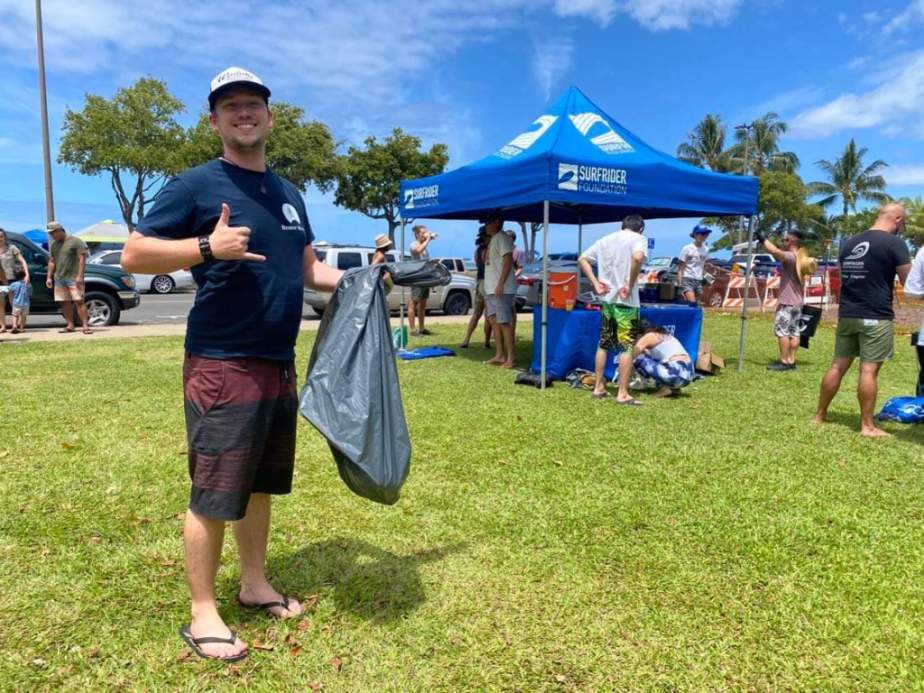
AR: What’s upcoming in 2023 for sustainability at the museum?
CH: As mentioned before, our annual Science and Sustainability Festival is coming up on April 22 (Earth Day). This event will feature a series of talks called “Meet Hawaiʻi’s Scientists” that gives the museum’s scientists space to talk about their work and inspire our guests. We’ll be hosting partners from across Hawaiʻi to have stands to showcase their work in both natural science and sustainability, often with a solid connection to Native Hawaiian culture. This event is themed within the framework of the ahupuaʻa, a Native Hawaiian land division system. It runs from Mauka (mountains) through the Kula (plains) to Makai (ocean). Each ahupua`a contains all the resources a community needs, including water, wood, and food, with extra for trade and tributes. In this event, we’ll highlight the organizations and research teams at the museum that work in each area of the ahupuaʻa and have signage that explains the system, helping connect the event to place-based culture.
We also plan to explore our current waste systems on campus through a waste audit. This will provide us with the data necessary to begin effectively planning change on the campus. We’ve been working on reducing plastic waste over the last few years, pledging to be a single-use plastic-free campus in 2019. We want to build on this initiative and further transform how we collect and process waste; to do this, we need data. After we have this data, we can identify what we need to change and, hopefully, work with community members to develop solutions and educational material around the system.
We also have several infrastructure projects on the horizon, funded by CIP funds from the state, which will take a lot of management and coordination!
AR: What advice would you give a museum interested in starting a sustainability, recycling, or other related program and procedures?
CH: My first step with any initiative is understanding where you are now. If you want a recycling program, do a waste audit with staff and volunteers. This allows your staff to get a hands-on understanding of the current situation and potential problems and, hopefully, some buy-in on fixing them. Being inclusive and bringing your team together is the most valuable tool in your arsenal.
From there, you can identify the issues and start planning accordingly. Start slowly. Identify small steps that can be made in the right direction. Huge, sweeping changes are likely intimidating for institutions and are generally met with more resistance. Moving the needle little by little is the most effective way to make continuous and long-term change, even if it doesn’t feel it at times! Every little bit counts, and cumulatively, they can build to make significant impacts.
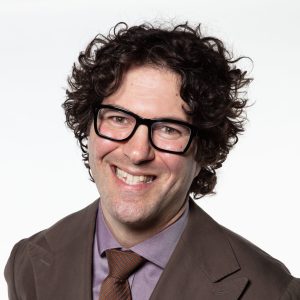





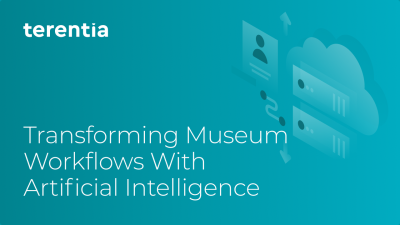
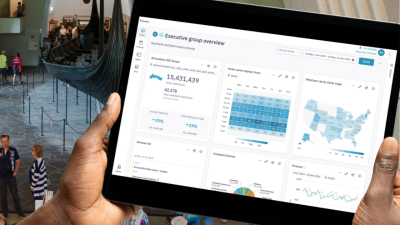

Comments